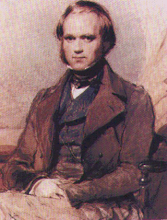
Back in the days before plants developed flowers to attract insects to help disperse their pollen, wind was the main agent of pollenation.
However, paleontologists recently argued that some pre-flowering plants had pollen receptors located deep within the plant so that wind-borne pollen would be unlikely to reach them. These scientists suggest that a little-known group of fossil insects called scorpionflies might have served in pollinating these pre-flowering plants.
These fossil scorpionflies (descendants of which are still around today) have narrow, elongate mouthparts suited for reaching far into plants and feeding on fluids, so it is unlikely they could have ingested the large pollen grains. Instead, pollen grains may have stuck to the insect’s head or mouthparts as they fed, and scorpionflies became accidental pollinators—the first known pollinators of pre-flowering plants.
Reference: Ren, D., Labandeira, C., Santiago-Blay, J., Rasnitsyn, A., Shih, C., Bashkuev, A., Logan, M., Hotton, C., & Dilcher, D. (2009). A Probable Pollination Mode Before Angiosperms: Eurasian, Long-Proboscid Scorpionflies Science, 326 (5954), 840-847 DOI: 10.1126/science.1178338)
Photo credit: http://z.about.com/d/animals/1/0/n/g/18149_web.jpg


No comments:
Post a Comment